Armamentarium
|
History of the Procedure
A biopsy is a surgical procedure in which a tissue sample is removed from a patient and submitted for laboratory examination. The word biopsy is of Greek derivation, originating from the words bio (life) and opsia (to see). The first recorded biopsies were probably performed by the Arabs in the twelfth century ad . During that time, fragments of neck masses were removed to “diagnose” a thyroid goiter. The modern term biopsy was introduced into medical terminology by the French dermatologist Besnier in 1879, whereas the first true diagnostic biopsy was obtained by the Russian Rudnev in 1875. Although surgical biopsies only came into generalized usage in the early 1900s, many types of biopsy procedures are available today. Most soft tissue biopsy procedures utilized today are either the shave ( Figure 80-1, A ), the ellipse ( Figure 80-1, B ), or the punch varieties ( Figure 80-1, C ). Each biopsy can also be categorized as incisional ( Figure 80-1, D ) or excisional ( Figure 80-1, E ) depending on the amount of tissue removed.
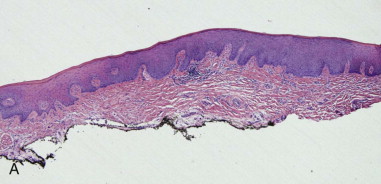
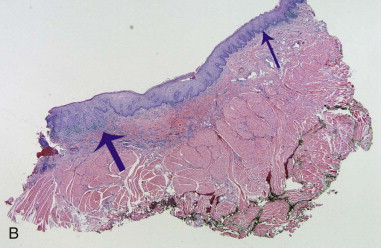
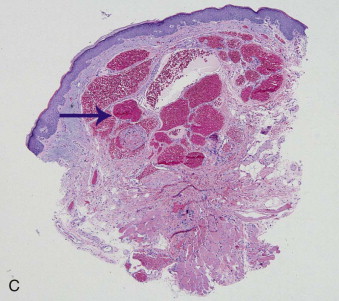
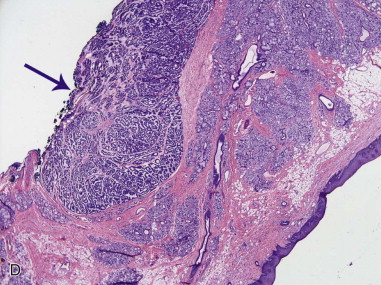
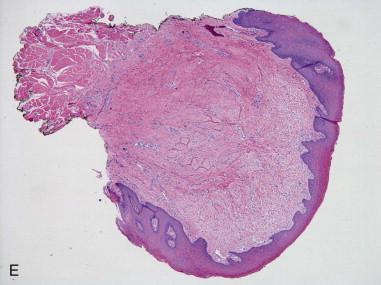
History of the Procedure
A biopsy is a surgical procedure in which a tissue sample is removed from a patient and submitted for laboratory examination. The word biopsy is of Greek derivation, originating from the words bio (life) and opsia (to see). The first recorded biopsies were probably performed by the Arabs in the twelfth century ad . During that time, fragments of neck masses were removed to “diagnose” a thyroid goiter. The modern term biopsy was introduced into medical terminology by the French dermatologist Besnier in 1879, whereas the first true diagnostic biopsy was obtained by the Russian Rudnev in 1875. Although surgical biopsies only came into generalized usage in the early 1900s, many types of biopsy procedures are available today. Most soft tissue biopsy procedures utilized today are either the shave ( Figure 80-1, A ), the ellipse ( Figure 80-1, B ), or the punch varieties ( Figure 80-1, C ). Each biopsy can also be categorized as incisional ( Figure 80-1, D ) or excisional ( Figure 80-1, E ) depending on the amount of tissue removed.
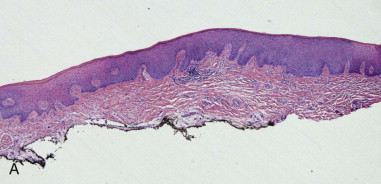
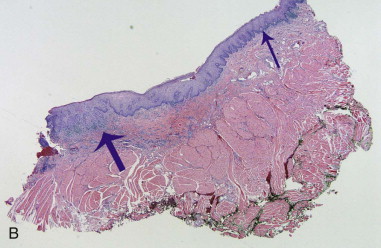
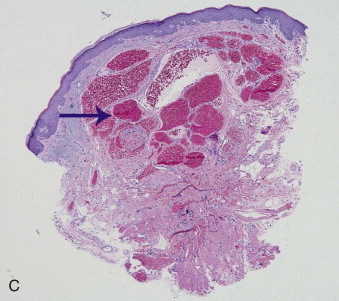
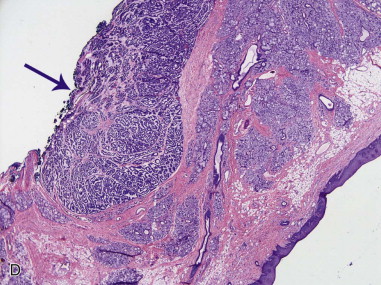
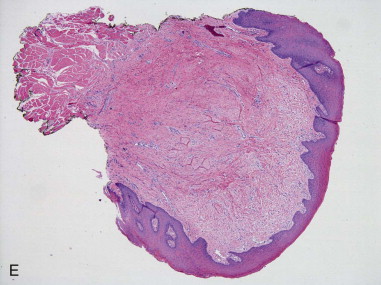
Indications for the Use of the Procedure
A biopsy is a diagnostic study often performed by an oral and maxillofacial surgeon. Fresh tissue, of either soft or hard character, is either partially or completely removed, allowing the oral and maxillofacial surgical pathologist to microscopically evaluate the cells from this tissue. These tissues can also be evaluated chemically and occasionally radiographically. Oral and sinus mucosa, bone, soft tissue, skin, and lymph nodes of oral and maxillofacial surgical patients are the most common tissues evaluated by means of a biopsy.
When the patent’s clinical presentation, past history, or imaging studies do not allow a definitive diagnosis, the biopsy is the indicated procedure. Prior to the biopsy, a differential diagnosis is of great importance for choosing the correct or most appropriate biopsy technique. Any mucosal, skin, or bone abnormality that persists despite either removal of the associated irritant or treatment with adjunctive means deserves a biopsy. In addition, any lesions suspected to be of neoplastic origin are indicated for biopsy, as are vesiculobullous lesions and the majority of pigmented mucosal lesions.
Various biopsy techniques are available today. These include the elliptical biopsy, the core-needle biopsy, the fine-needle aspiration biopsy, and the bone trephine biopsy as well as many other types. Incisional and excisional biopsies are also characterized as ellipse, punch, or shave types. In addition, cytologic smears are tissue identification methods available to the oral and maxillofacial surgeon.
Limitations and Contraindications
There are few absolute contraindications to a biopsy. In most instances, an area of infection has no need of a biopsy. Patients with known allergies to local anesthetics or who have a history of bleeding may require an alteration in the usual biopsy routine. Patients with deeply positioned lesions may need the aid of computed tomography (CT) or ultrasound (US) to facilitate the determination of the exact type of biopsy needed. One must also carefully consider the use of a bone biopsy in patients undergoing treatment with intravenous or oral bisphosphonates as well as in patients who would require a bone biopsy in the area of prior irradiated bone.
Stay updated, free dental videos. Join our Telegram channel

VIDEdental - Online dental courses


